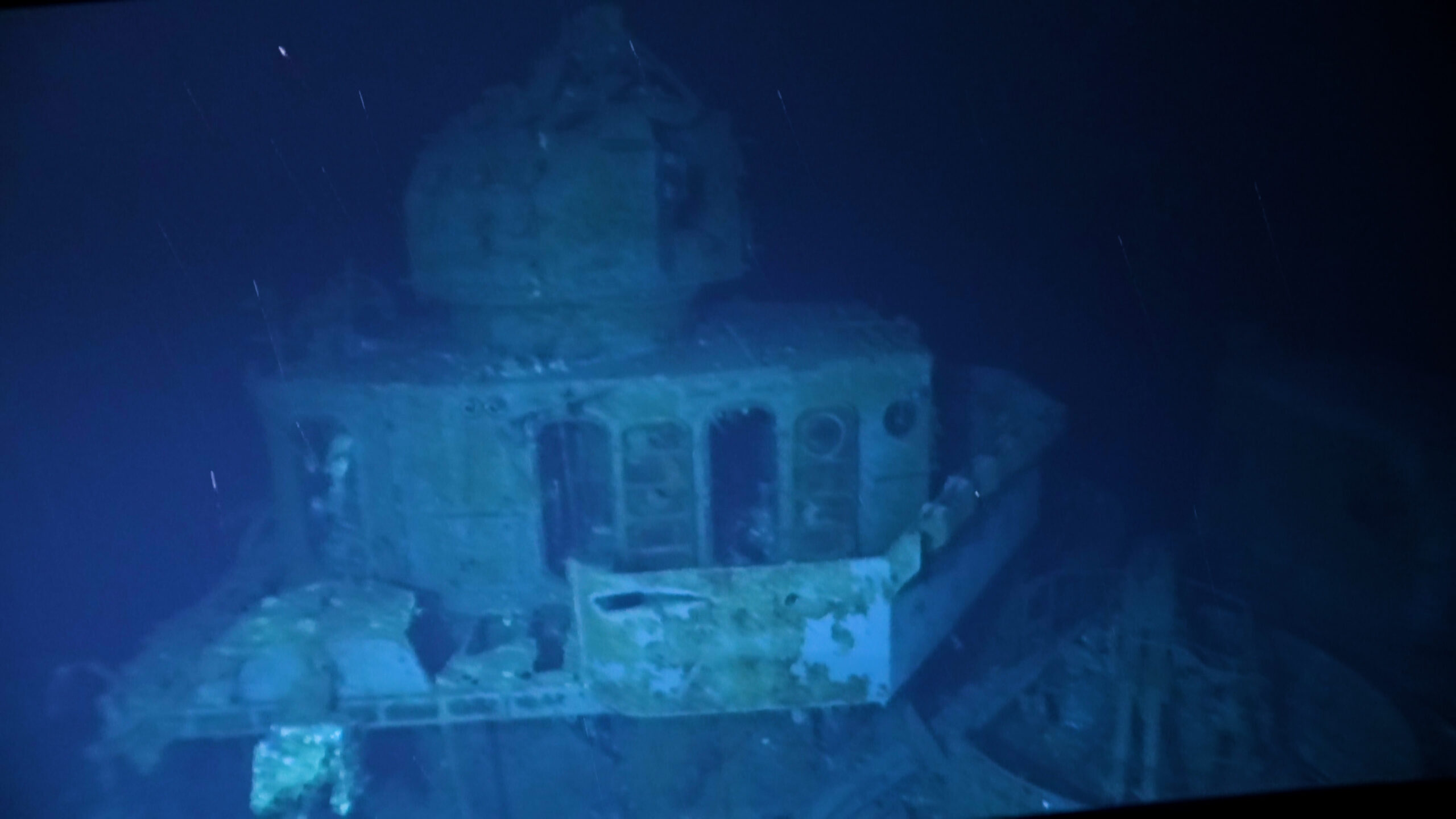Explorers dive to deepest known shipwreck
The team reached the USS Johnston, a U.S. Navy destroyer that sank on Oct. 25, 1944.

Explorers recently dove to the deepest known shipwreck in the world.
The team reached the USS Johnston, a U.S. Navy destroyer that sank on Oct. 25, 1944 after an intense battle with the Japanese during World War II. The ship, about 376 feet (115 meters) long and 39 feet (12 m) across at its widest, was sunk during the Battle of Leyte Gulf, the largest naval battle in history, according to a statement.
The wreckage was first discovered in 2019 off the coast of Samar Island in the Philippines Sea. At the time, a remotely operated vehicle (ROV) recorded parts of the wreck, but couldn't reach the deepest parts.
The shipwreck lies about 21,180 feet (6,456 m), or the equivalent of about 15 Empire State Buildings deep. Victor Vescovo, a former U.S. Navy commander who funded the new expedition, piloted his submersible, the DSV Limiting Factor, down to the wreck during two, eight-hour dives, the deepest any human or submersible has gone to explore a shipwreck, according to the statement.
Related: Disasters at sea: 6 deadliest shipwrecks
The explorers surveyed and captured high-definition photos of the ship (the other two divers who went down in the submersible were retired U.S. Navy Lt. Cmdr. Parks Stephenson, a naval historian, and Shane Eigler, the senior submarine technician).
They were able to capture footage of the ship's bow, bridge and midsection, which lay in parts deeper than the ROV could descend in 2019. The hull number "557" was still visible on both sides of the bow; the gun turrets, twin torpedo racks and many gun mounts were also visible and still in place, according to the statement. They didn't find any human remains or related clothing.
Sign up for the Live Science daily newsletter now
Get the world’s most fascinating discoveries delivered straight to your inbox.
"We could see the extent of the wreckage and the severe damage inflicted during the intense battle on the surface," Stephenson said in the statement. "It took fire from the largest warship ever constructed — the Imperial Japanese Navy battleship Yamato — and ferociously fought back."
"All of the accounts pay tribute to the crew's bravery and complete lack of hesitation in taking the fight to the enemy, and the wreckage serves to prove that," Stephenson added. The ship and its commander Ernest Evans who died in the battle, were later awarded for their bravery and heroism.
At the end of the expedition, the dive team laid a wreath "on the oceanic battlefield," according to the statement.
Three other ships that sank in the Battle of Leyte Gulf haven't yet been found.
The sonar data, imagery and field notes will not be made public, but given to the U.S. Navy to distribute as they see fit, according to the statement. The crew took care not to disturb the wreck, but the hope is that the footage and information that they brought back from their expedition will become useful for historians and naval archivists, Vescovo said in the statement.
In 2019, Vescovo piloted the DSV Limiting Factor to extreme depths around the globe, becoming the first person to reach the deepest point in all of the planet's five oceans as part of the "Five Deeps Expedition," Live Science previously reported.
Originally published on Live Science.

Yasemin is a staff writer at Live Science, covering health, neuroscience and biology. Her work has appeared in Scientific American, Science and the San Jose Mercury News. She has a bachelor's degree in biomedical engineering from the University of Connecticut and a graduate certificate in science communication from the University of California, Santa Cruz.









